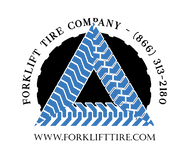15th Apr 2019
Failure to inspect and replace the forks of your forklifts poses a great danger to your personnel. To prevent this from happening Occupational Safety and Health Administration (OSHA) recommends prioritizing checkups of the forks during pre-operation inspection. Additionally you are advised to replace them swiftly in case of any noted damage.
To establish the damage on your forks you will need to look for modifications on the different parts of the forks resulting from wear and tear. Some of the parts you should consider checking for damage are;
The Positioning Locks and Heels
They usually support the shank at the carriage to enable the fork to easily pick up load. If they have any surface cracks then they are not in any position to support the forks optimally even while handling their rated load capacity. This is because they can break and give in to heavy load leading to unnecessary losses or injuries.
Through the use of the Fork Arm Wear Caliper you can also establish whether they are fit for use by sliding the back of the Caliper into the hook socket. The forks should be sent for repair if the lip of the hook pocket comes into contact with the Fork Arm Wear Caliper's back.
The Shank and Heels
Both the heel and shank of the fork play an important role when it comes to supporting the load and therefore should be checked for any surface cracks which make them unsafe for use. In addition to surface cracks, the shank should be measured for straightness using the caliper where a deviation of more than 0.05 of the original straightness renders them not fit for use.
The angle at the heel should be checked for a deviation of more than three degrees after which it should be sent for further checkup to establish if it has permanent deformation or stress cracks. Normally, it will then be recommended for repair or disposal.

Fork tips
Brand new forks normally have their tips at the same level therefore when one of their tips is higher than the other it’s a sure sign of damage that needs repair. Usually, a 3% deviation from the length of the fork blade length as measured by the Fork Arm Wear Caliper is enough to have it sent for repair. The reason being it won’t be very efficient while picking up load which can lead to damage on the load.
Blades
The blades of the forks perform the critical task of sustaining the load during transport and so they need to be firm. However, if they have visible cracks on the surface they pose the risk of breaking and dropping the load. If their straightness deviates by more than 0.05 as measured by the Fork Arm Wear Caliper then they should be repaired before being deployed for use.
Your personnel can also measure the thickness of the fork blade where a drop of more than 10% from the original thickness of the fork is enough to disqualify it from being used in normal operations.
As much as a replacement is always a viable solution to damage, forks are usually designed to be durable therefore prevention measures are highly recommended when they are still new. Usually most of the damage to the forks is basically due to negligence and can be averted in the early stages.
So what are some of the measures you can observe to ensure you take good care of your forks?
- Completely discourage the knocking of the forks against walls or columns during use. You will find it easy to reinforce this measure if you use certified personnel to operate your forklifts.
- Ensure that the loads that you are handling are equally balanced so that you don’t end up applying more pressure on one side of the forklift causing misalignment.
- Avoid using the forklift on loads that are much longer than the length of the blade as this will cause an abnormal bend at the heel.
- Every forklift has a maximum weight that it can handle, so ensure you are well versed with the capacity of your forklift before you or your personnel embark on any projects.
- Ban any modifications on the forks that are meant to equip them to perform tasks that they are not designed for unless you have approval from the manufacturer or a qualified engineer.
It is recommended that you do routine check-ups on the forks through careful inspection of its different parts. You should also make sure that your company has a policy that guides the employees on the dos and don’ts where the forklift is involved. This will ensure that you, your personnel and your goods are always safe during operations.
Forklift Tire Company is one of the largest suppliers of forklift tires in the USA. We are happy to help you find the right tires for your forklift truck. Visit our online store here for great discounts or email us at sales@forklifttire.com, our customer service team is ready to assist you.






